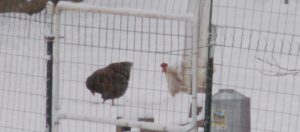While sorting through stacks of dusty, old German books, looking for beer recipes that might date to pre-1600, or hints as to where they may be, I stumbled across an interesting series of books: the Oeconomia, oder Hausbuch. They were put into publication beginning in 1563 by Johannes Coler, a German Protestant priest who lived from 1566-1639. He lived in various parts of what is now Germany, including Frankfurt and Parchim, but spent a significant part of his early life in Berlin. Coler’s father, the Provost of Berlin, was the Lutheran theologian Jakob Coler; Jakob authored the books, but was in poor health by 1600, and his son had them printed on Jakob’s behalf.
The topic of the books was a popular one at the time: Household Maintenance. This ran the gauntlet from keeping and maintaining the gardens, hunting, cooking, finances, etc. But the most important chapter, for my purposes, was Chapter 20 of the Second Book. This chapter was entitled: On Brewing. Here’s what it looks like:

To be sure, it’s only one brewing method (“how we do things here in Berlin”), but it’s better than most of the other stuff I’ve seen, which includes more than a little bit of guesswork. And what’s better, it’s all recognizable! This is all stuff that has equivalents in modern brewing (mostly). Let’s break it down, with my translation (slightly tweaked for readability, and modern language):
- Pour the barley into a butt, and leave it to soak there for three days and nights (in winter, four is as well).
- Pour the barley onto a platform, raised into a heap, until it begins to germinate or shoot.
- Stir it frequently, separating the grains from each other, until there is a small sprout at its tip.
- When enough of it has sprouted, separate the grains from each other, and dry it in the stove-room, in the sun, or in a drying-oven.
- Grind the malt coarsely, so that the meal is well-hulled.
- In a pot, bring water to “seething;” put the milled malt into the butt, and pour the hot water over it, and stir it together.
- Scoop the mash from the butt into the kettle, and stir it well so that it does not burn. If the malt is burned, the beer will taste burnt, as well.
- Put wood laths alongside each other in the butt, and pack around them tightly with straw to strain the malt out from the liquid. (The butt needs to have a tap in front.)
- Pour the cooked malt into the butt, on the straw, and open the tap, collecting the liquid in another butt. If there is a lot of malt, heat another kettle of water, and pour it onto the grain. (If you want good beer, you pour less water; if you want a lot of beer, but lower quality, you pour a lot of water.)

- Once you have collected the runoff, pour a little into the kettle, so that it is about one-third full. Add hops–if the beer is going to store for a long time, you need a little more hops; if it is going to be drunk quickly, you need less. Stir the hops in, and bring the liquid to a boil. (The boil duration is as long as you think necessary, which is learned by experience and taste).
- When the boil has gone long enough, you add the rest of the liquid to fill the kettle, and bring the whole volume to a boil (without stirring).
- After the boil, place a large basket over a butt, and scoop the beer into the butt, straining the hops out in the basket. (If you are making a small beer, re-use these hops in it, straining them out after the boil again.)
- Let the beer cool to lukewarm, then add an adequate amount of yeast: more yeast if there is more beer, but less yeast for a smaller volume.
- Let the beer ferment for one to three days (or eight days for a Lager Beer), then remove the yeast from the top, and pour the beer into a cask. If it will be drunk soon, let it sit for eight days to clear and carbonate. If it is a Lager Beer, let it sit for longer. Afterwards, tap the cask and drink.

That seems like a lot to process, I know, but it’s really not so bad once you unpack what Johann says. At its heart, there are three parts to this.
First, steps one through five take you from raw grain to ground malt. There are a pair of surprises here. The most obvious one is that classically, we’ve thought that brewers purchased “finished” malt from maltsters. According to this, that wasn’t the case, at least in some areas–and if there was a part of the world I’d have bet there were professional maltsters in period, it would have been Germany.
But the really interesting thing to me is the drying of the malt. The most common “thought-experiment” description of medieval beer says it would have tasted smoky, from being dried over wood. Here we have a choice of three methods to dry the malt: “in the stove-room, in the sun, or in a drying-oven.” The drying-oven sounds to me like what we’d call a kiln. While I have issues with the notion that all kilns inherently smoked the malt, I’ll grant that it’s possible.
Drying malt “in the sun,” however, sounds like you’re creating what I’ve seen referred to as “wind-malt.” (I’ll call it “sun-malt,” from here out.) Basically, air-dried. And “in the stove-room” sounds to me like the equivalent of “dry it in a warm, dry place.” While I can come up with a way for the “stove-room” to smoke the malt, however slightly, I can’t really picture sun-malt having any smoke at all. And either of these two would give you an extremely pale malt–easily as pale as the palest of modern ale malts. I’d say at most, you’re probably looking at between 2.5 and 3.5 degrees Lovibond.
Second, from six to about thirteen, you’re taking your malt and brewing beer. Again, there are a few interesting points. First, the “seething” water used in the mash. The German word used is “sieden,” which nowadays can translate as “to boil.” I submit to you, however, that the Berliners knew what they were doing, and knew that if the mash steeped too hot, you wouldn’t get good wort. (Modern science tells us that the malt conversion enzymes denature above about 160 degrees Fahrenheit.) Running the numbers through my brewing calculators, in order to cool a volume of boiling water to mash temperature, you’ve got to have so much grain that your mash wouldn’t work.
If, however, you bring your strike-water to a bit below boiling–seething, or (as the English have so poetically put it) “smiling”–your mash temperature will tend to even out in the 152 to 156 degree range, given a number of other variables. This is perfect mashing temperatures. (William Harrison, in his 1577 Description of England, calls several times for seething water.)
Scooping the mash back into the kettle and presumably heating it (all the while stirring it, to prevent it from scorching) looks to me like either decocting, or heating the mash up to “mash-out” temperatures (stopping the enzymatic activity)–probably the former. If the malt is of uneven quality, this would probably help to bump up the mash efficiency a little bit. I’ll have to do a bit of experimentation here, and update this with my results.
Straining the wort out from the malt is fairly straightforward. Pouring more water onto the grain to increase the volume of beer is sensible, as well. I find it interesting that they’re actually adjusting the quality of beer by adding more or less water–the end volume doesn’t seem as important, here, so much as the quality of the end result.
Then they fill the kettle a third of the way with wort, and boil it with the hops. The odd bit here is that they’re doing a partial-boil initially, then later adding the rest of the hops. I’m not certain the purpose of this–again, some experimentation will be forthcoming. (Another interesting point is re-using the same hops to make a small beer…)
Third, step fourteen, is fermenting, racking, clarifying, and (eventually) drinking the beer. The beer goes through what, for lack of a better term, I’ll call primary fermentation: up to three days, or “eight days for a Lager Beer.” Bear in mind, “lagers” in the modern sense were unheard of, at this time. This is attested to by the notion of “removing the yeast from the top”–skimming off the krauesen, or foam. If this were an English ale, we would call this “top-cropping” the yeast.
Having removed the yeast, the beer is now poured into its serving-cask, where it will sit for eight days, or–again, the interesting bit–longer, if it is a Lager Beer. Either way, by most modern standards, this is really quite quickly done. Most modern ales are around a month old or more, when you’re able to buy them; lagers (in the modern sense) take at least twice as long.
But they’re calling for the beer to be “clear and carbonated.” So, apparently it works… Yet again, further experimentation will need to take place.
There you have it! How to brew beer, in the style of Berlin, circa 1596. Great! But what’s the recipe? Well, for that, you’ll have to wait for my next post. What do you think? Please comment below…



